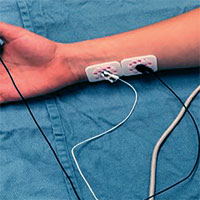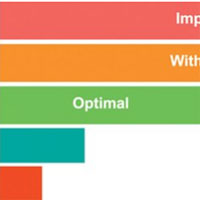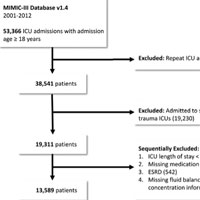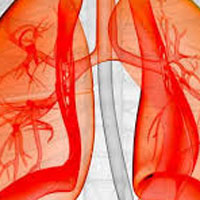Tag: mechanical ventilation

Implementation Challenges in the ICU: The Why, Who and How of Daily Interruption of Sedation
Despite apparent consensus, lack of shared understanding of the rationale for an intervention may lead to divergent practice patterns and failure to implement standardized, evidence-based practice. There was wide consensus... read more

Early Mobilization Reduces Duration of Mechanical Ventilation and Intensive Care Unit Stay in Patients With ARF
The introduction of early mobilization for patients with mechanical ventilation (MV) in the ICU shortened MV durations and ICU stays. A multidisciplinary team that includes the patient's family can work together to improve... read more

Beyond Ventilator-induced Diaphragm Dysfunction
Respiratory muscles are essential to ensure the vital function of breathing. The diaphragm is a unique respiratory muscle, because it contracts throughout the individual's life span without resting, not even during sleep.... read more

Reversing Neuromuscular Blockade
Neuromuscular blocking drugs have for years enabled anesthesiologists beneficially to relax skeletal muscles to improve anesthetic management, increase safety and quality of tracheal intubation, and to provide favorable intraoperative... read more

Impact of Vasoactive Medications on ICU-Acquired Weakness in Mechanically Ventilated Patients
In mechanically ventilated patients enrolled in a randomized clinical trial of early mobilization, the use of vasoactive medications was independently associated with the development of ICU-acquired weakness. Prospective... read more

Evaluating Delivery of Low Tidal Volume Ventilation in Six ICUs Using Electronic Health Record Data
Despite low mean tidal volume in the cohort, a significant percentage of patients were exposed to a prolonged duration of high tidal volumes which was correlated with higher mortality. Detailed ventilator records in the... read more

Effect of a Sepsis Educational Intervention on Hospital Stay
Adherence to a bundle strategy is low following an educational intervention. However, when patients are managed after instruction in guideline recommendations, hospital stay may be significantly reduced. The main cause... read more

Mechanical Ventilation Sedation Necessary for Comfort According to Nurses
Nurses' attitudes toward sedating patients receiving mechanical ventilation have shifted in the past decade, with fewer nurses now believing that all patients should be sedated. However, more than half of nurses still agree... read more

Laryngeal Injury and Upper Airway Symptoms After Oral Endotracheal Intubation With Mechanical Ventilation During Critical Care
Laryngeal injury from intubation is common in the ICU setting. Guidelines for laryngeal assessment and postextubation surveillance do not exist. A systematic approach to more robust investigations could increase knowledge... read more

Estimated Effects of Early Diuretic Use in Critical Illness
The main objectives of this study was to estimate the effects of diuretic use during the first 24 hours of an ICU stay on in-hospital mortality and other clinical outcomes including acute kidney injury (AKI) and duration... read more

Extubating Ventilated Patients on Vasoactive Infusions is Safe
In a large single centre study, 21% of intubated patients who received infusions of vasoactive infusions while mechanically ventilated were extubated for the first time while still receiving them. Coincident with their earlier... read more

Safety and Efficacy of VBF in Critically Ill, Mechanically Ventilated Adults Using the PERFECT Protocol
Underfeeding in critical illness is common and associated with poor outcomes. According to large prospective hospital studies, volume-based feeding (VBF) safely and effectively improves energy and protein delivery to critically... read more

Sepsis Surveillance Using Adult Sepsis Events Simplified eSOFA Criteria Versus Sepsis-3 Sequential Organ Failure Assessment Criteria
Sepsis-3 defines organ dysfunction as an increase in the Sequential Organ Failure Assessment score by greater than or equal to 2 points. However, some Sequential Organ Failure Assessment score components are not routinely... read more

Does high PEEP prevent alveolar cycling?
Acute respiratory distress syndrome (ARDS) patients need mechanical ventilation to sustain gas exchange. Animal experiments showed that mechanical ventilation with high volume/plateau pressure and no positive end-expiratory... read more




